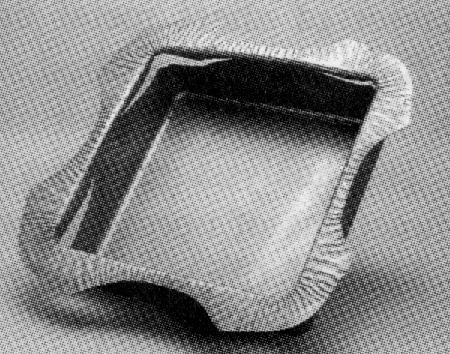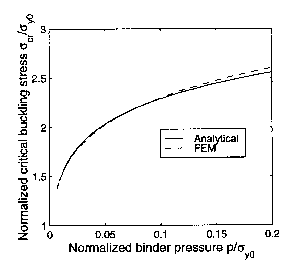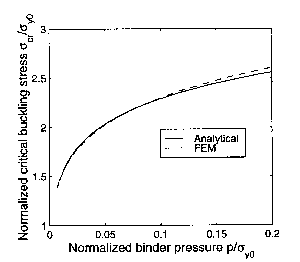Stamping is one of the most widely used manufacturing process in automobiles, aircraft and other applications. Wrinkling is one of major defects in stamping, especially for those parts on the outer skin panels where the final part appearnce is critical. In addition, it can damage the dies and adversely affect part assembling and function. The prediction and prevention of wrinkling are therefore extremely important.
Naturally, wrinkling is a phenomenon of compressive instability at the presence of excessive in-plane compression. Plastic bifurcation analysis is one of the most widely used approaches to predict the onset of the wrinkling. Recently, a different approach which promises the ability to predict flange wrinkling under normal restraints was developed by Cao and Boyce, in which energy conservation and finite element analysis were combined to obtain the critical buckling stress and the resulting wavelength as functions of binder pressure. The predicted results matched the experimental conical cup forming results very well. However, the use of FEM is somewhat time-consuming, which is not convenient as a design tool.
Instead of using finite element method (FEM), an analytical model to obtain the critical wrinkling conditions is developed based on the above wrinkling criterion. It agrees well with numerical results obtained from Finite Element Analysis, especially in terms of the prediction of the critical buckling stress. The major advantage of this current model is its ability to obtain accurate results at extremely low computational cost. Such curves can be easily implemented into any 2D or 3D membrane code for predicting the onset of the wrinkling, which was previously impossible to achieve.
Supported by General Electric Company through contract AGRMT-5-5-97 and by the National Science Foundation through grant DMI-9713744.
Related Publications
Wang, X. and Cao, J., "An Analytical Model for Predicting Flange Wrinkling in Deep Drawing", NAMRI'98.
Cao, J. and Wang, X., "An Analytical Model for Plate Wrinkling under Tri_axial Loading and Its Application", submitted toInternatinal Journal of Mechanical Science , 1998.



